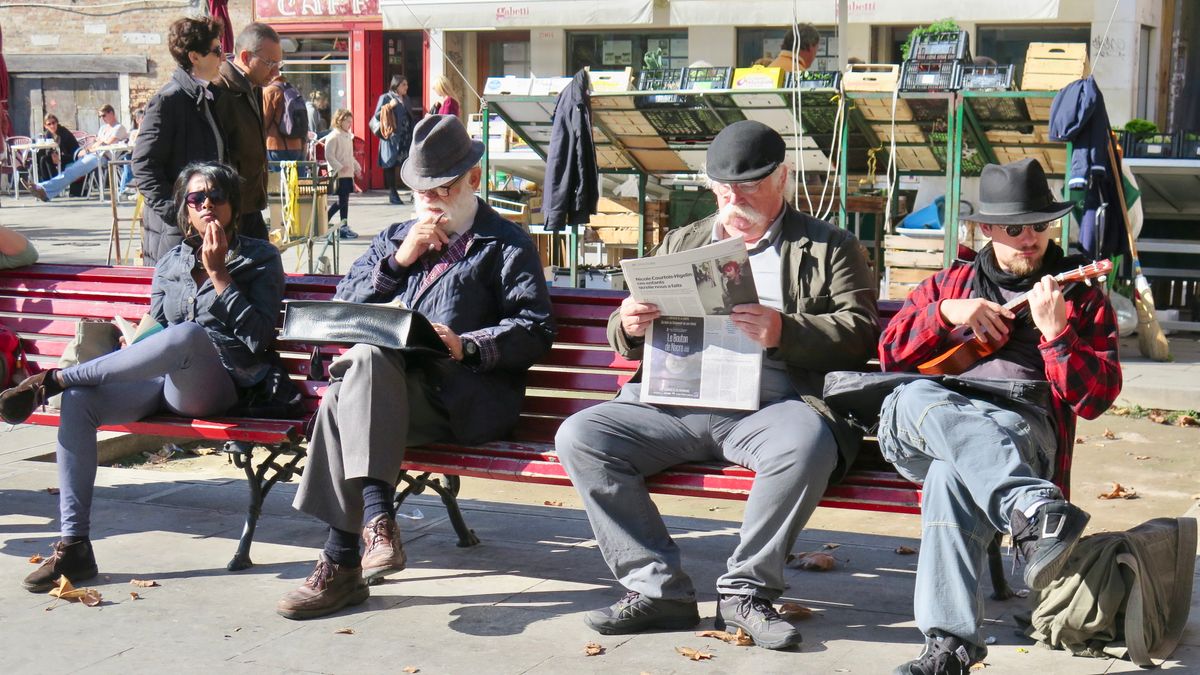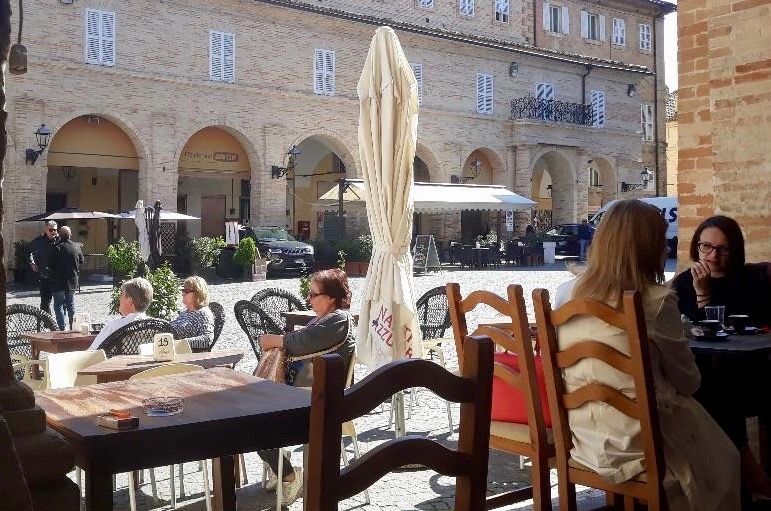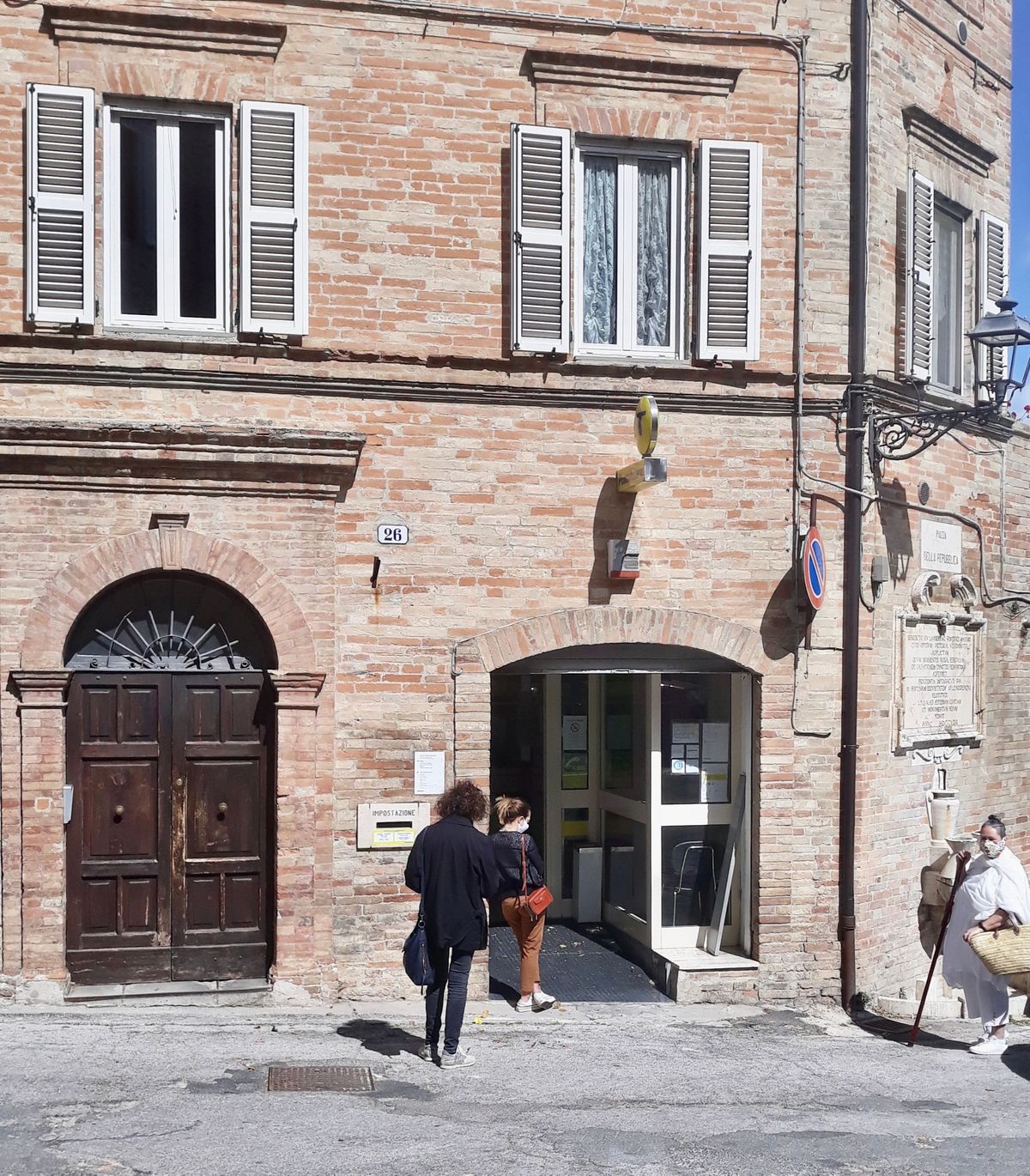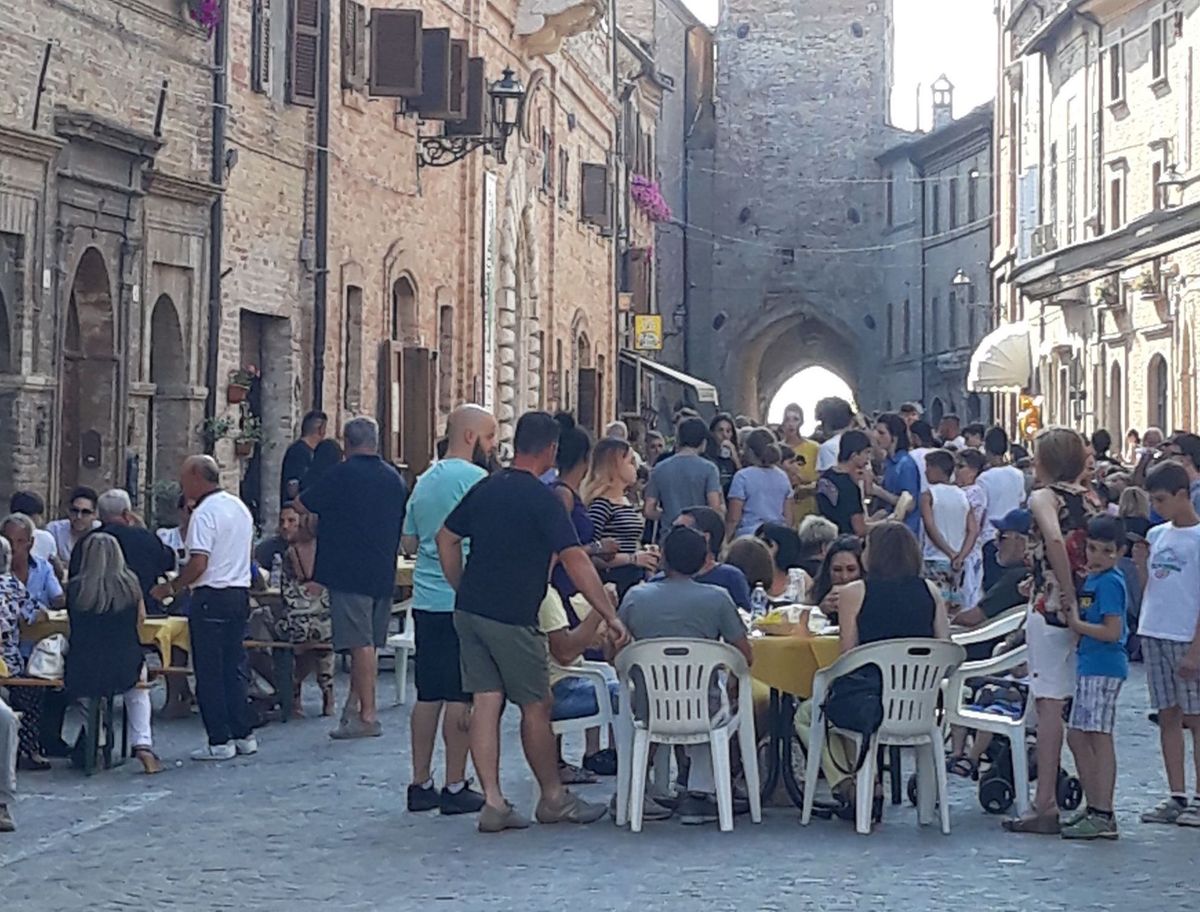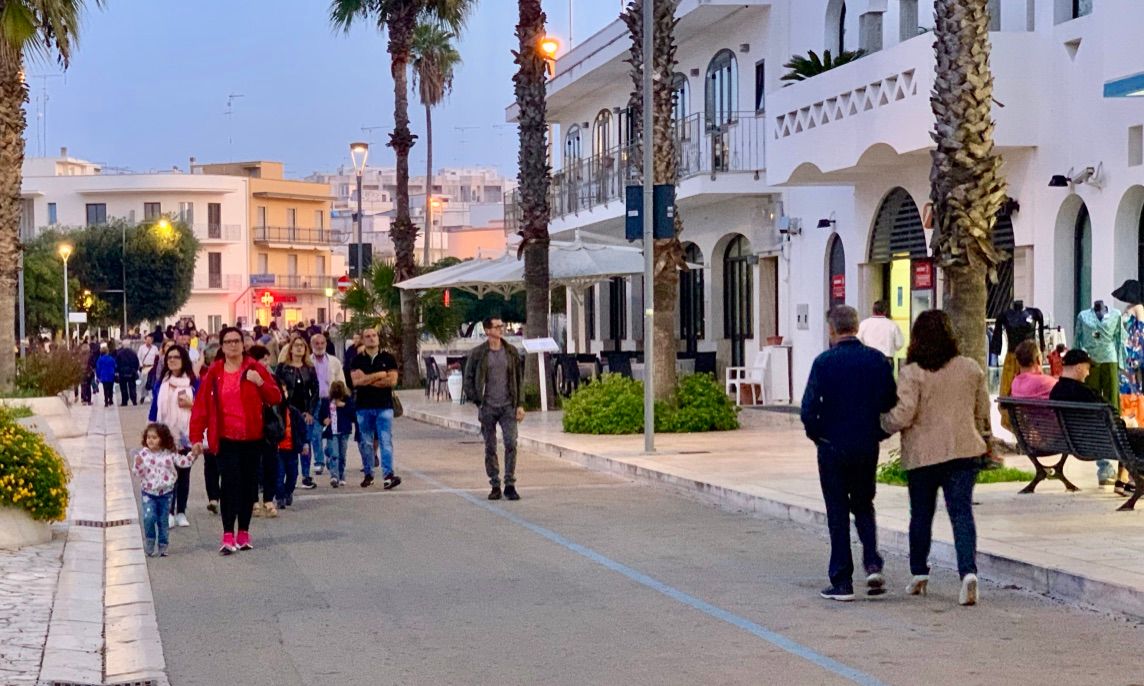The role that place plays for a country coming out of lockdown
In Italy, we are in the process of emerging from months of being strictly “confined to quarters.” Most people here have paid attention to the guidelines for staying at home, social distancing and wearing gloves and masks when in public. And it has worked, as the number of virus cases and deaths plummeted to low, pre-lockdown levels. The COVID-19 crisis—which for a while put us at the top of the list in this tragic public health tragedy—now seems to be under control. Today, Italy is not even among the top countries for cases. Meanwhile, parts of the U.S. are now beginning to see their figures spike upward.
So all of Italy is ready to re-open. Under new guidelines we will be able to move about the country, see friends and family, shop and visit places as we wish with no special “self-certification” forms. Restaurants and movie theatres will reopen in another few weeks. We will even be able to visit other countries in the EU, and vice versa. We will not, however, see visitors from the U.S. and other parts of the world this summer. No hordes of tourists will be packing restaurants, queuing up at museums, or surging along the winding lanes of Venice. Which is perhaps for the best. Venice definitely needs a rest.
What has been fascinating to observe how Italians adapted to social distancing. As a culture, Italians love to congregate, walk about streets and piazzas on their daily passeggiata, and enjoy long meals with friends and family in close conversational proximity. Sitting at tables and slowly sipping prosecco is a major part of the daily routine.
So how did Italians react to these personal limitations? Frankly, I was worried that the restrictions would be ignored. But that does not appear to be the case, based on both what we noticed in our own village and the overall decline of new cases.
Physical Distancing, Social Connection
Much has been written about the “Swedish Model” of dealing with the virus. I would like to describe the “Italian Model” of dealing with issues of public space and social separation arising from the virus.
Earlier this week we went out for our own passeggiata . Normally, this consists of a slow, meandering stroll that can take thirty minutes to an hour, depending on how many people we meet and how many impromptu conversations we engage in. This one exceeded an hour.
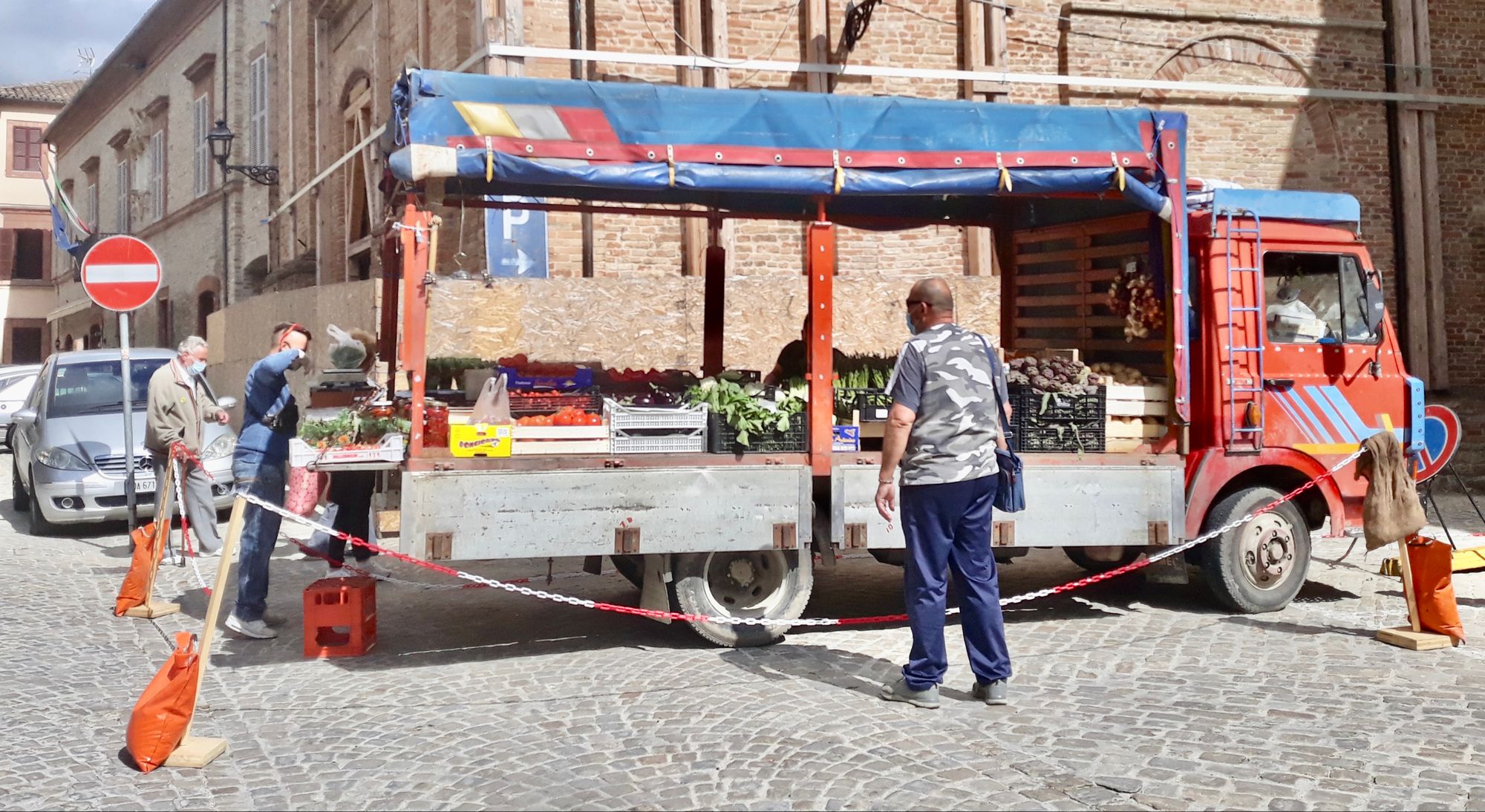
There are four places in the village where people tend to spend time congregating: 1) The square by the town gate, flanked by a meat market, a grocery, the post office, and the town bakery; 2) The public space in the main central street, located between a big coffee bar and a well-known family-owned restaurant. 3) A similar public space between another coffee bar and the town’s community hall. 4) The broad space in front of a food market at one end of the main street, where notices of live musical performances and local deaths are posted.
On this particular day, three of these spaces were filled with people, albeit spaced apart. All but a few wore masks. And yet they still greeted each other enthusiastically. They still engaged in animated conversations. And they still clearly enjoyed each other’s company. As the aged American expat in town, who is within a vulnerable demographic, many people asked me how I am doing. It is a sweet and caring gesture.
We spotted an open-sided truck parked on the edge of one of these spaces, which was doing a brisk business with its artfully arranged array of vegetables and fruit freshly picked from nearby farms. The proprietor had set up a clear zone using posts and ropes around the truck to keep customers at a distance. You told him what you wanted, he held it up for approval, and dropped it in a sack. A simple but effective accommodation to the safety guidelines.
Similarly, the fish truck that comes in twice a week took its position in another one of these spaces. The fish are displayed, as always, behind a curved glass case and countertop. And as always, customers stand – albeit separated – and discuss the best selections. Every Tuesday and Friday, this truck appears at 11:30am on the dot. You can hear it coming from a distance with to the announcement of “Pesci! Pesci! …Pesci Oggi!” (“Fish! Fish! …Fish Today!”) loudly shouted by the driver into a hand-held microphone.
I have been struck by how much everyone in the village seems to be enjoying these public spaces, while still being mindful of the health of others. This attitude of collective responsibility has been apparent to me when we first moved to town. Everyone exhibits a genuine caring for others. It did not take very long for us to become part of this simple social compact—considering the welfare of our fellow citizens.
Almost on a daily basis we are reminded of the precious social ethic that makes people so willing to show kindness. One elderly neighbor gives us bottles of wines she makes; we help her with various tasks when she needs it. Another person in town offers us fresh eggs from her chickens; my wife hems curtains for her. Just today, our auto mechanic dropped off several pots of mums he saw at a nursery; he had previously overheard my wife say she likes them.
Throughout our walks around town, owners inside wave and shout out greetings as we passed. People carry on conversations from their balconies and windows. We chat briefly, as always do, with the affable postal carrier and the person delivering food to our door. Despite physical separation, our neighbors manage to maintain a sense of community.
The important role of public places endure here in Italy, even though it has been temporarily muted.
Mark Hinshaw is a retired architect and city planner who lived in Seattle for more than 40 years. For 12 years he had a regular column on architecture for The Seattle Times and later was a frequent contributor to Crosscut. He now lives in a small hill town in Italy.
Related Reading:
